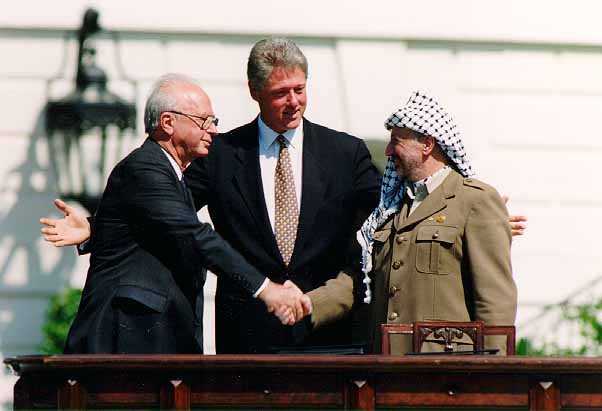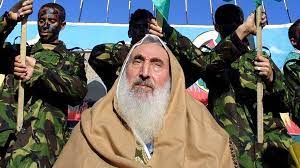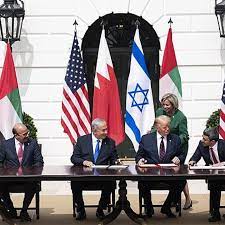The Israeli-Palestinian conflict is a complex and deeply rooted dispute that has spanned many decades. Its origins can be traced back to the late 19th century, and it continues to shape the political, social, and economic landscape of the Middle East. This article provides a year-by-year historical overview of the conflict, highlighting key events and turning points.
Understanding the Israeli Palestinian Conflict
Late 19th Century to 1947
Late 19th century: The seeds of the Israeli-Palestinian conflict were sown in the late 19th century when the Zionist movement gained momentum. This movement aimed to establish a Jewish homeland in the region of Palestine, then part of the Ottoman Empire.
1917: The Balfour Declaration, issued by the British government during World War I, voiced support for the establishment of a “national home for the Jewish people” in Palestine, further intensifying tensions between Jewish immigrants and the indigenous Arab population.

1919: The League of Nations granted Britain the mandate to govern Palestine after the fall of the Ottoman Empire. Under British rule, tensions escalated as both Jewish and Arab communities vied for control of the land.
1947: In the aftermath of World War II and the Holocaust, the United Nations approved the Partition Plan for Palestine. This plan proposed dividing Palestine into separate Jewish and Arab states, with Jerusalem under international administration. Jewish leaders accepted the plan, but Arab leaders rejected it, leading to the outbreak of the First Arab-Israeli War in 1948.

1948 to 1967
1948: In the wake of the declaration of Israeli independence, neighboring Arab states invaded Israel, resulting in the First Arab-Israeli War. Israel emerged victorious and expanded its territory. However, hundreds of thousands of Palestinian Arabs became refugees.

1956: The Suez Crisis saw Israel, along with France and the UK, launch a military campaign to regain control of the Suez Canal, which had been nationalized by Egypt’s leader, Gamal Abdel Nasser. International pressure led to a ceasefire, and Israel withdrew from the Sinai Peninsula.
1967: The Six-Day War erupted when Israel launched a preemptive strike against its Arab neighbors, including Egypt, Jordan, and Syria. Israel’s swift victory resulted in the capture of the West Bank, Gaza Strip, Golan Heights, and the Sinai Peninsula.
1967 to 1993
1973: The Yom Kippur War began when Egypt and Syria launched a surprise attack on Israel on the Jewish holy day of Yom Kippur. A ceasefire was negotiated, and this conflict paved the way for further diplomatic efforts.

1979: The Egypt-Israel Peace Treaty was signed, leading to the return of the Sinai Peninsula to Egypt. This marked the first formal peace agreement between Israel and an Arab state.
1987: The First Intifada, a Palestinian uprising against Israeli rule, commenced in the West Bank and Gaza Strip, prompting international attention and diplomatic efforts to address the conflict.

1991: The Madrid Conference marked the beginning of negotiations between Israel and Arab states. These discussions set the stage for the subsequent Oslo Accords.

1993: The Oslo Accords were signed, representing a significant breakthrough in the Israeli-Palestinian peace process. They resulted in limited Palestinian self-rule in parts of the West Bank and Gaza Strip.
1993 to the Present
2000: The Second Intifada, also known as the Al-Aqsa Intifada, erupted in response to escalating tensions. The conflict led to significant violence, including suicide bombings and military incursions, causing heavy casualties on both sides.

2005: Israel unilaterally disengaged from the Gaza Strip, evacuating its settlements and withdrawing its military presence, while maintaining control of borders and airspace. This move aimed to reduce friction but led to ongoing hostilities and conflicts with Gaza-based militant groups.
2006: Hamas, an Islamist organization, won Palestinian legislative elections in Gaza, further deepening the political divide between Hamas and Fatah, the rival Palestinian political faction.

2008-2009: Israel launched a military offensive in Gaza known as Operation Cast Lead, resulting in significant loss of life and damage in the densely populated territory. This was followed by further conflicts in subsequent years.
2013-2014: Peace talks between Israelis and Palestinians were rekindled with the backing of the United States. However, these negotiations ultimately collapsed, dashing hopes for a comprehensive peace agreement.
2020: The Abraham Accords were signed, representing a significant diplomatic shift in the region. This series of agreements normalized relations between Israel and several Arab nations, marking a new era of cooperation and recognition.

The Israeli-Palestinian conflict remains an intractable issue that has caused immense suffering and loss on both sides. Its resolution continues to be a complex and contentious process, with the historical events outlined above offering a comprehensive view of its progression. Yet, the roots of this conflict run deep, and the path to a peaceful resolution remains uncertain, as both Israelis and Palestinians seek self-determination and security in the region.
The Recent Escalation: Causes and Consequences
Hamas’ Rocket Attack
Hamas’ launch of 5,000 rockets into Israel marks a significant escalation. The underlying causes of this attack are multifaceted and complex. It stems from a combination of territorial disputes, religious tensions, and political struggles. The organization’s motivations include gaining international attention and asserting its position within the Palestinian territories.
Israeli Response
Israel’s response to this rocket attack is equally crucial to understanding the ongoing situation. The Israeli government’s commitment to defending its citizens has led to airstrikes in Gaza. The potential for further military action is a matter of concern for the international community.
International Implications
The conflict in the Middle East is not isolated; it has global repercussions. International organizations and foreign governments are closely monitoring the situation. The potential for wider regional instability and the broader implications of this conflict on international politics make it a topic of worldwide interest.
In conclusion, the Israeli Palestinian conflict is a multifaceted issue with deep historical roots and complex causes. Understanding the conflict’s history, impact, and ongoing efforts to resolve it is essential. By addressing frequently asked questions, we aim to provide a holistic perspective on this enduring issue.
The ongoing conflict between Hamas and Israel is a complex issue that cannot be reduced to a few simple lines. It demands careful analysis and understanding of the historical context, recent events, and potential solutions. As we continue to monitor the situation, it is crucial to remember the human cost and work towards a more stable and peaceful Middle East. This article provides an in-depth examination of the conflict, positioning it as a comprehensive resource for those seeking a deeper understanding of the situation.




